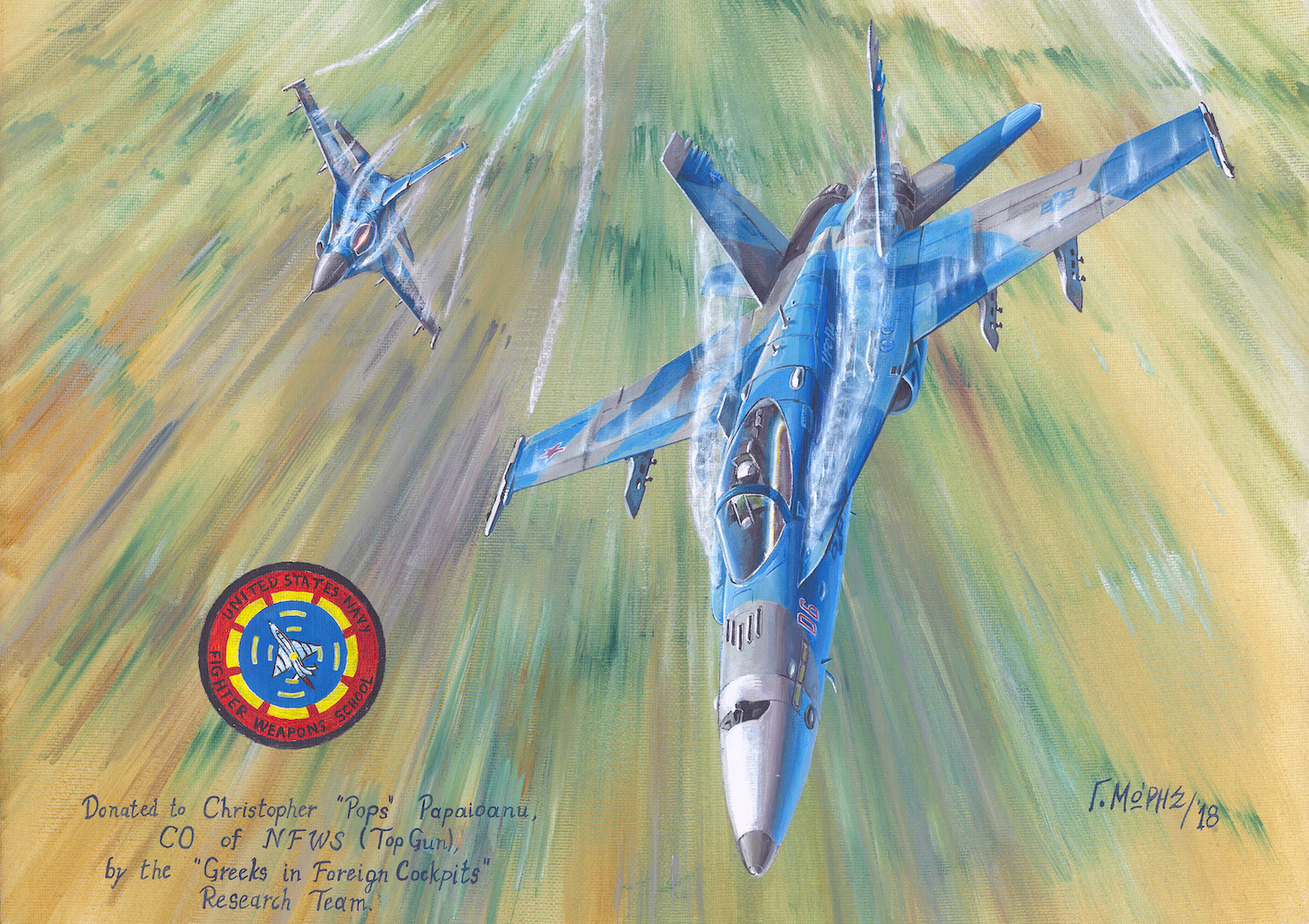By Robbin Laird
During my visit to NAWDC in early July 2020, I had a chance to continue discussions begun earlier in the year with the CO of NAWDC and his senior officers.
Rear Admiral Brophy had highlighted as one major change at NAWDC from the time when I had last visited was the complete revamping of the strike syllabus at NAWDC. And he credited the work of CDR Papaioanu (N-5 Strike Department Head) with leading the effort in re-designing the strike syllabus.
Prior to becoming the N-5 Department head, he was the CO of TOPGUN, which he explained to me was a normal progression. He underscored that “this was the first major rewrite of the strike syllabus at Fallon in more than twenty years.”
This was being driven by the shift from the land wars to great power competition and the need to operate in a fluid extended battlespace. As CDR Papaioanu put it: “The level of modern warfare is nothing like we have seen before. We are talking about extraordinarily intense capabilities across a broad spectrum of warfare.”
How to fight effectively in such conditions? According to CDR Papaioanu: “The key to the modern fight is an ability to integrate an effective force package.”
The strike syllabus has been redesigned to work a combat force able to “integrate an effective force package.” Clearly, the coming of the F-35 is part of the technological stimulus to such a rethink and redesign, as I have argued for many years, fifth generation aircraft in the force drive its renorming.
But it is also part of a significant change in how C2 and ISR is being used to shape the approach to strike as well. As discussed with CDR Fraser, head of the information warfare department, dynamic targeting is a key capability which the fleet needs to be able to deliver.
The new strike syllabus is designed in large part to deliver a dynamic targeting capability.
According to CDR Papaioanu, the redesign was driven by inputs from the theater commanders with regard to what they wanted from Naval Aviation in the context of the strategic shift to the high-end fight. Based on feedback from the theater commanders, they began the process of reworking the curriculum. He and his team worked closely with COCOM planning staffs in thinking through the redesign.
The fleet is a key enabler of combat flexibility. “We are the 9/11 force for the nation, so we have to be able to be able to operate across a spectrum of conflict, including higher end missions.”
As he described a key driver of the change has been with regard to the ISR enablement of the fleet. They are focused increasingly on the left side of the kill chain, and leveraging ISR assets to be able to do so. In the kill chain focus, the priority emphasis has been upon target and engage with a priority training focus on targeting.
“Now we need to focus much more on the find, fix and track functions. And we need to pay more attention on working with ISR assets to work the left side of the kill chain, and we have altered the syllabus to enable training to work the left side of the kill chain more effectively.”
In my terms, this is a shift from a kill chain to a kill web focus. In a kill web focus, the ISR assets which will help determine how the force package if formed, shaped and executes may or may not be organic parts of a pre-defined task force.
In terms of training, the syllabus emphasizes a couple of core changes. First, is the clear focus on mission command. “We take the mission commanders and challenge them to think through how various assets could be used in an ISR enabled strike package? How will they use the range of capabilities available? How can I as a strike commander take advantage of the sensors on a P-8? How do I ensure that I am getting the kind of information from a platform at the time I need it to execute my mission?”
As he explained the shift, the goal of the new syllabus is to address the paradigm shift with regard to ISR integrability into the strike force. The syllabus is designed to be flexible enough to bring in a variety of assets to empower the mission commander and his strike force.
And it is very clear, that the shift in training which CDR Papaioanu described is part of a broader change in the training function. Training in the new syllabus is highly interactive with real world evolution of combat capabilities and operations. This generates and a continuous learning cycle for training from ops to training to development and back to ops.
For the story of the featured image, please see the article about CDR Papaioanu.


